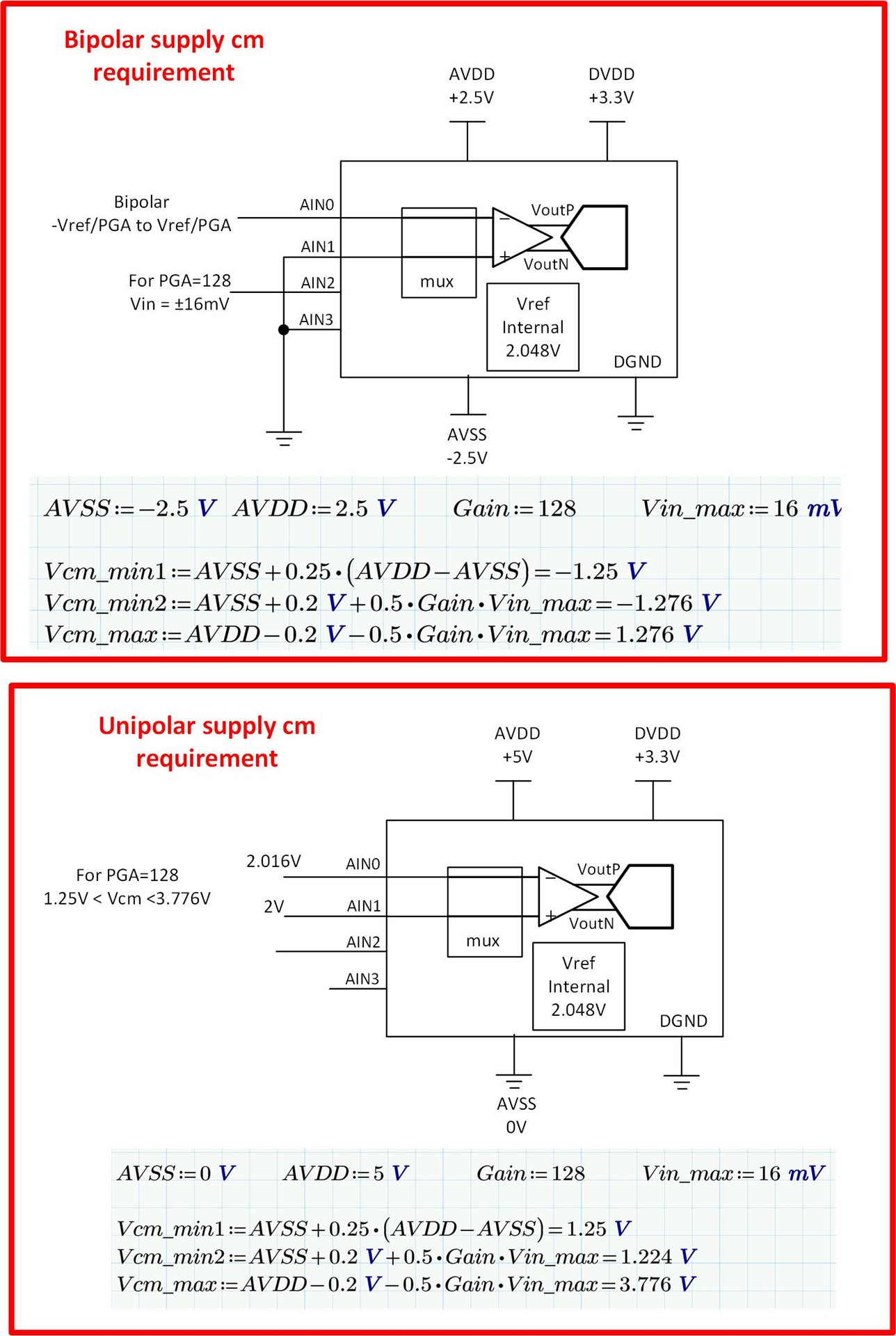Other Parts Discussed in Thread: , ADCPRO
Hello,
I have a design where I would like to use PGA>4.
Current design has
- AVDD=+3.3V
- AVSS=GND
- Vref=1.024V (external)
- Ain0=Signal +
- Ain1=GND (Signal GND) so, single ended

My newest design requires use of PGAs of higher than 4, so I wonder what hardware and FW option should be set/enabled to make use of full 1-128 PGA range?
I have made several modifications to the PCB already, by de-soldering pins of ADS1220, lifting them and connecting to AVDD=+2.5V, AVSS=-2.5V, RefN/RefP used internally connected to AVDD/AVSS but still am struggling to get correct performance.
Thererofe, I would like to ask you to provide suggestion to the design to be able to measure single-ended signal with full PGA 1 to 128.
If it is needed, single-ended signal can be fed to the ADS1220 as differential, any hardware change there is needed will be implementer.
Thank you in advance.




